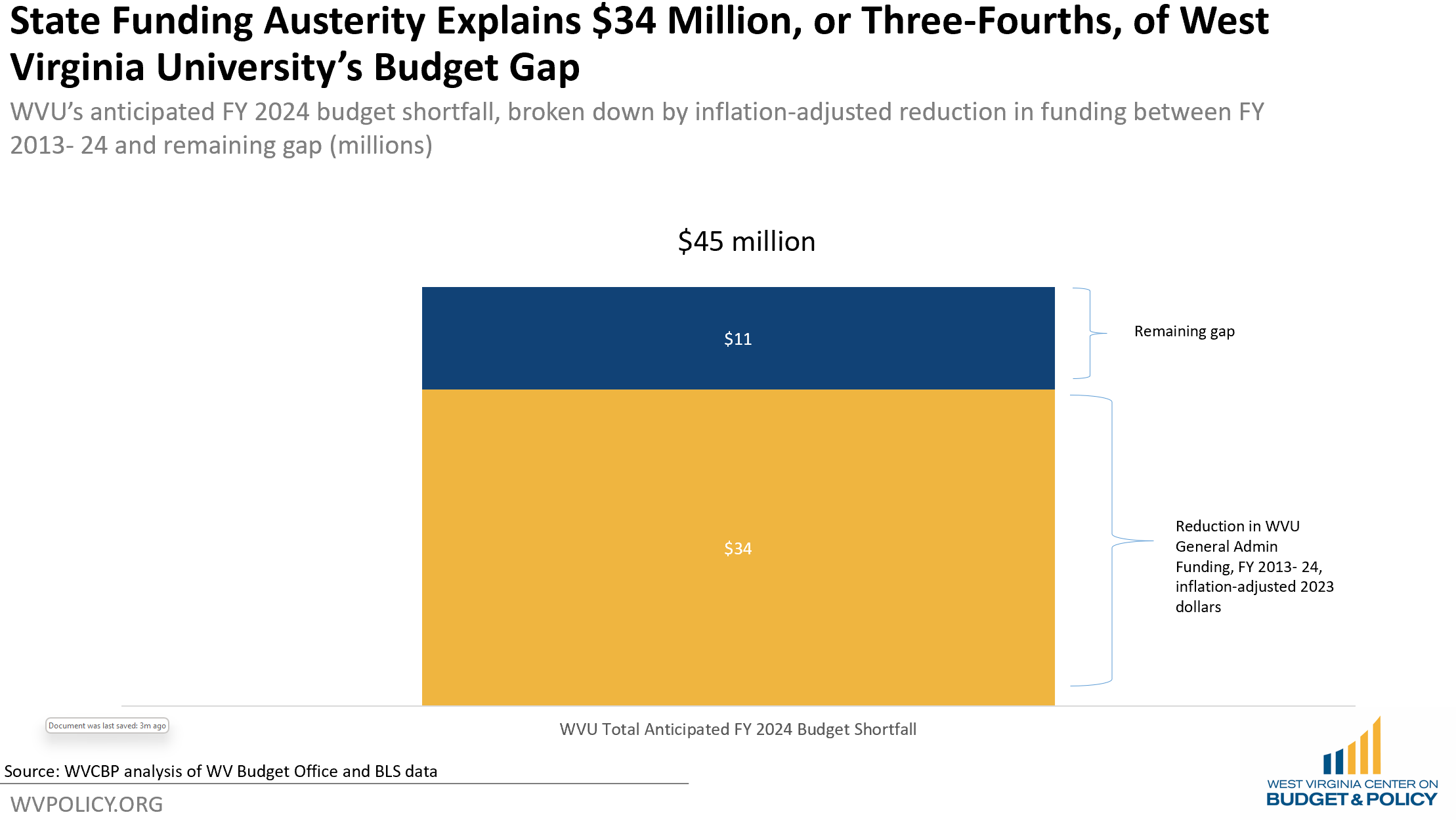I keep seeing UWV mentioned as an example of a large state school failing. Yeah its hurting right now, and that is well documented.
With that said, from the many articles I have read that interview Gee and document the last 20 years of UWV funding, much of what UWV is experiencing right now is self created.
They have a president that is all too happy to cut programs and radically transform the state's largest university into something that more closely aligns with a technical college(reduce majors to ones that graduate students into jobs for the state's current industries), and a state government that has consistently reduced financial support and recently increased control over funding.
With that said, from the many articles I have read that interview Gee and document the last 20 years of UWV funding, much of what UWV is experiencing right now is self created.
They have a president that is all too happy to cut programs and radically transform the state's largest university into something that more closely aligns with a technical college(reduce majors to ones that graduate students into jobs for the state's current industries), and a state government that has consistently reduced financial support and recently increased control over funding.
While the root of WVU’s budget deficit is largely declining enrollment, it’s been compounded by the fact that the university’s budget has become more dependent upon tuition dollars over the last decade as state funding has declined.

How West Virginia lawmakers indirectly influenced WVU's budget cuts
State lawmakers have supported program cuts and layoffs at West Virginia’s flagship university, guided by last year’s performance-based funding formula.mountainstatespotlight.org
Through a law passed last year, state lawmakers changed how West Virginia’s public colleges and universities are funded and now, have been able to indirectly influence the decision-making for the budget cuts.
“As we worked through the programs that we’ve recommended for reduction or discontinuance, we were guided by the state’s funding formula,” Rob Alsop, vice president for strategic initiatives at WVU, told lawmakers on Monday.
The new performance-based funding formula rewards universities and colleges that help students work towards and complete their degrees on-time, particularly for students who are over 25, low-income or unprepared coming out of high school.
But the formula also particularly prizes degrees that are designated as state priorities for workforce development, including engineering, health care, social work, education, computer science and transportation.
And those state priorities are reflected in WVU’s proposed cuts. Academic programs that are bringing in large numbers of students — and valuable tuition dollars — have largely been spared. Programs that the state had deemed as priorities will see some layoffs, but just one of 18 will be discontinued.

How West Virginia lawmakers indirectly influenced WVU's budget cuts
State lawmakers have supported program cuts and layoffs at West Virginia’s flagship university, guided by last year’s performance-based funding formula.mountainstatespotlight.org
During this year’s State of the University address, WVU President Gordon Gee pointed to several factors driving the shortfall including declining college-aged population, lower college-going rates, and rising financial costs. But one major factor was glaringly missing: deeply reduced state funding for colleges and universities. In fact, if West Virginia lawmakers had simply kept higher education funding at the same levels as a decade ago, West Virginia University would have an estimated additional $37.6 million in state funding for FY 2024, closing the majority of this year’s budget gap.

Erosion of State Funding for Higher Education Explains Most of WVU's Budget Crisis - West Virginia Center on Budget & Policy
West Virginia University is currently facing a $45 million budget shortfall for the upcoming fiscal year, expected to balloon to $75 million annually by 2028. During this year’s State of the University address, WVU President Gordon Gee pointed to several factors driving the shortfall including...wvpolicy.org
Declining college population alone does not explain the budget crisis. In 2022, West Virginia’s education appropriations per full-time equivalent were nearly $3,000 below the national average. An analysis from State Higher Education Finance (SHEF) found that over the last few decades, West Virginia’s public colleges and universities have increasingly had to rely on tuition as a share of total revenues as state funding has declined — a national trend that has been even more dire in West Virginia. Between 1980 and 2022, colleges and universities nationwide doubled their reliance on tuition, on average, going from 21 percent to 42 percent of total revenue collected via student tuition. Over that same period, West Virginia’s public institutions tripled their reliance on tuition, going from receiving 19 percent of their total revenue from tuition to 56 percent.

Erosion of State Funding for Higher Education Explains Most of WVU's Budget Crisis - West Virginia Center on Budget & Policy
West Virginia University is currently facing a $45 million budget shortfall for the upcoming fiscal year, expected to balloon to $75 million annually by 2028. During this year’s State of the University address, WVU President Gordon Gee pointed to several factors driving the shortfall including...wvpolicy.org
